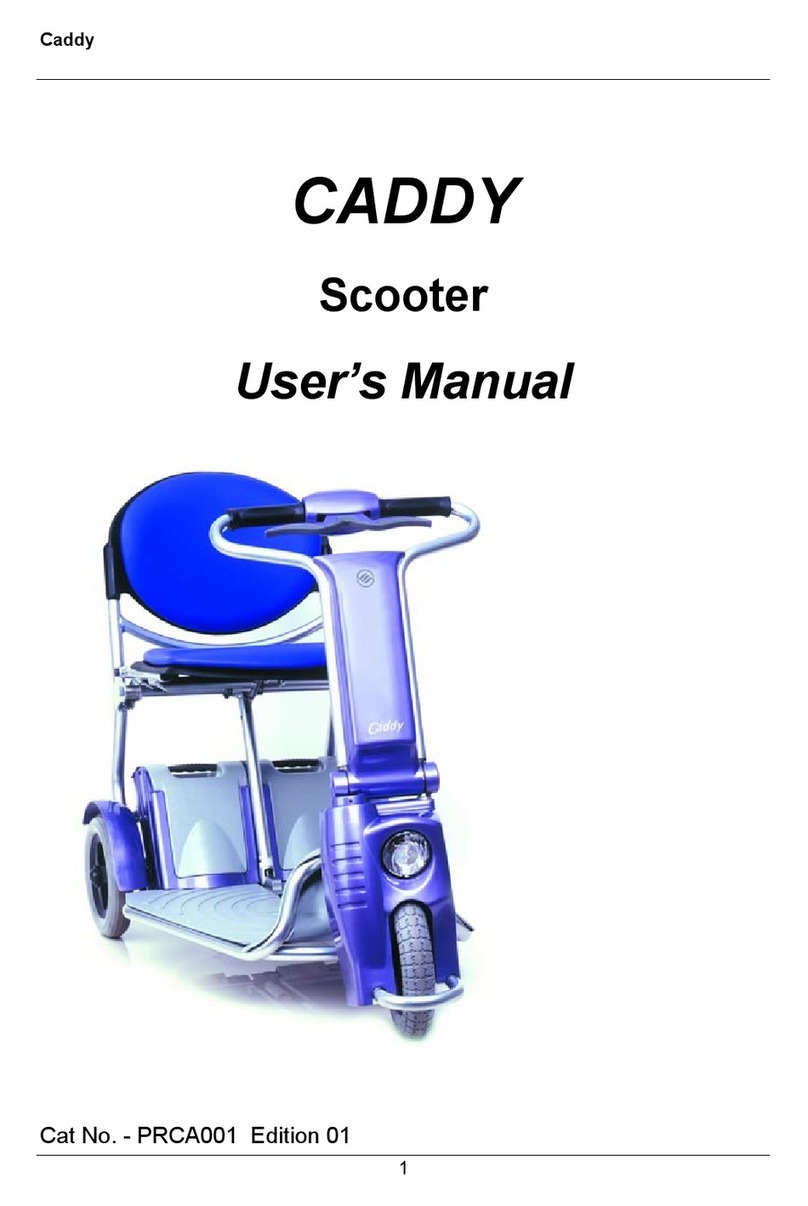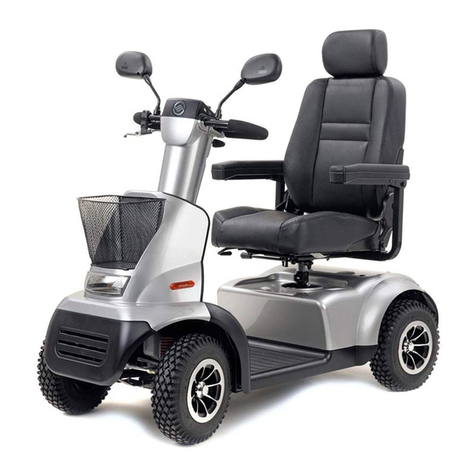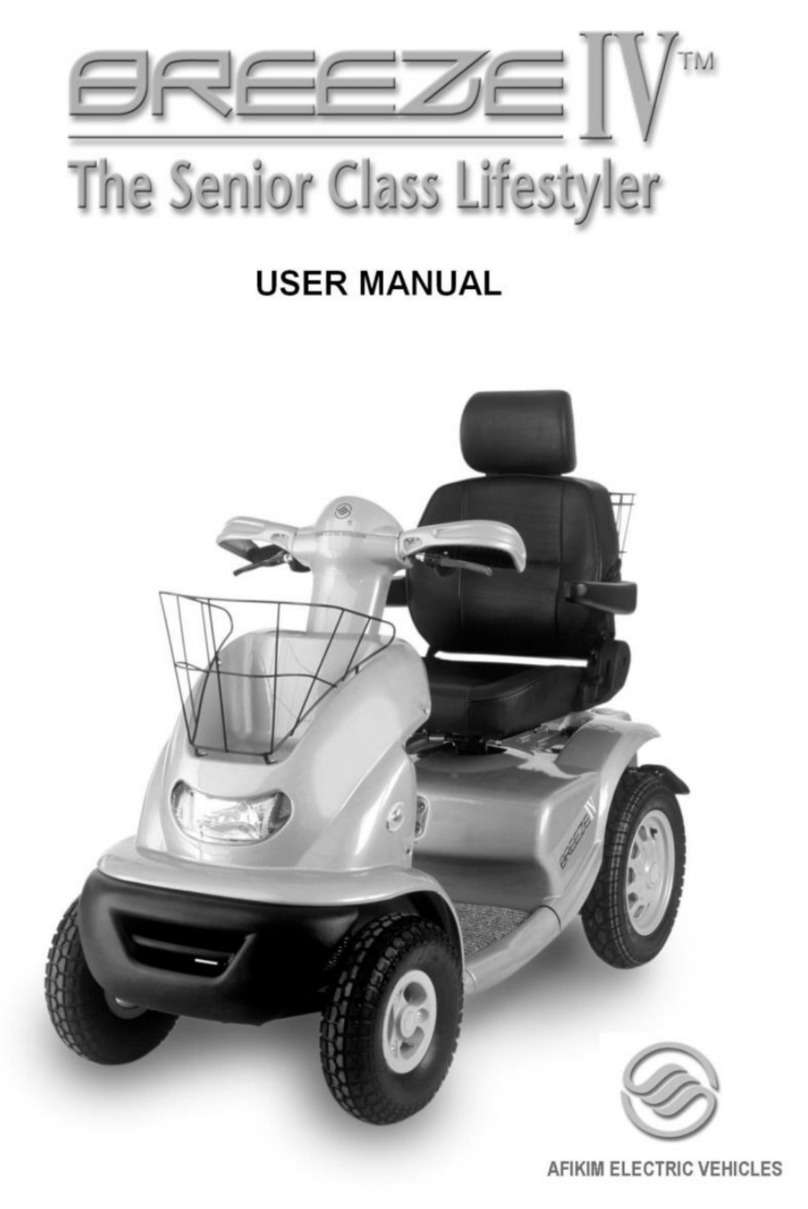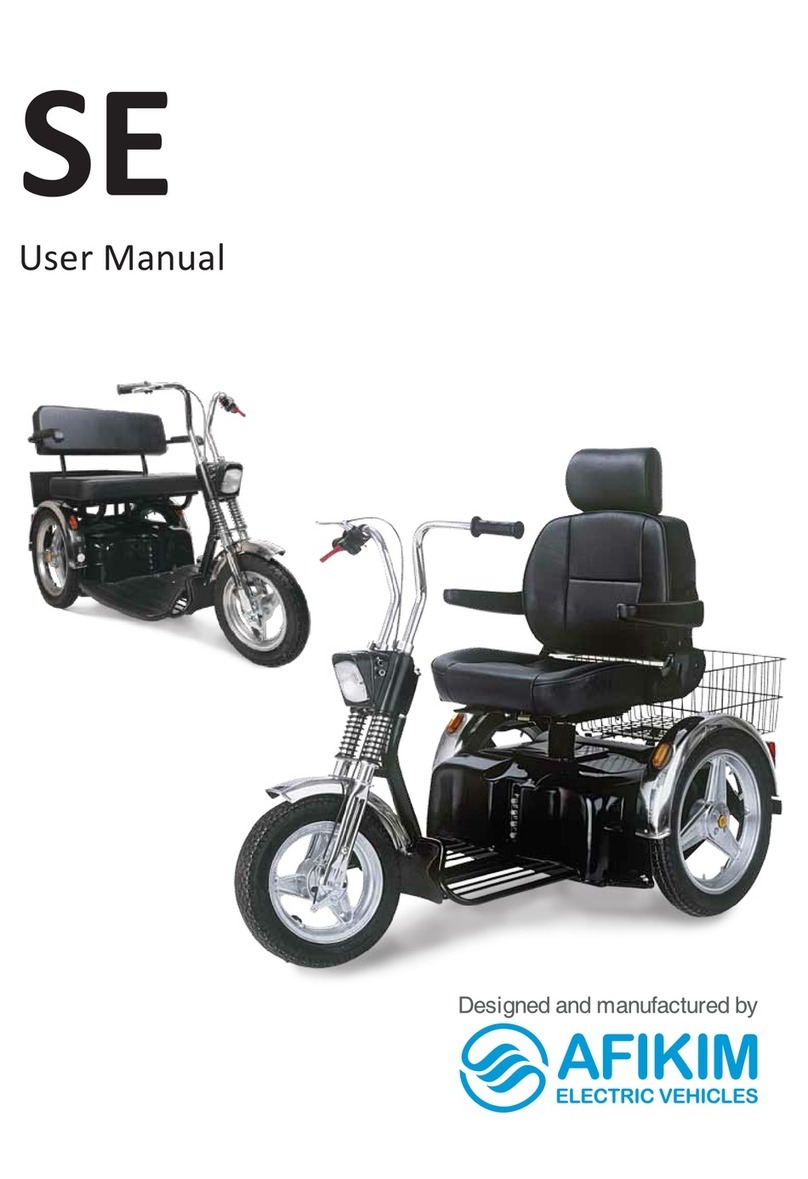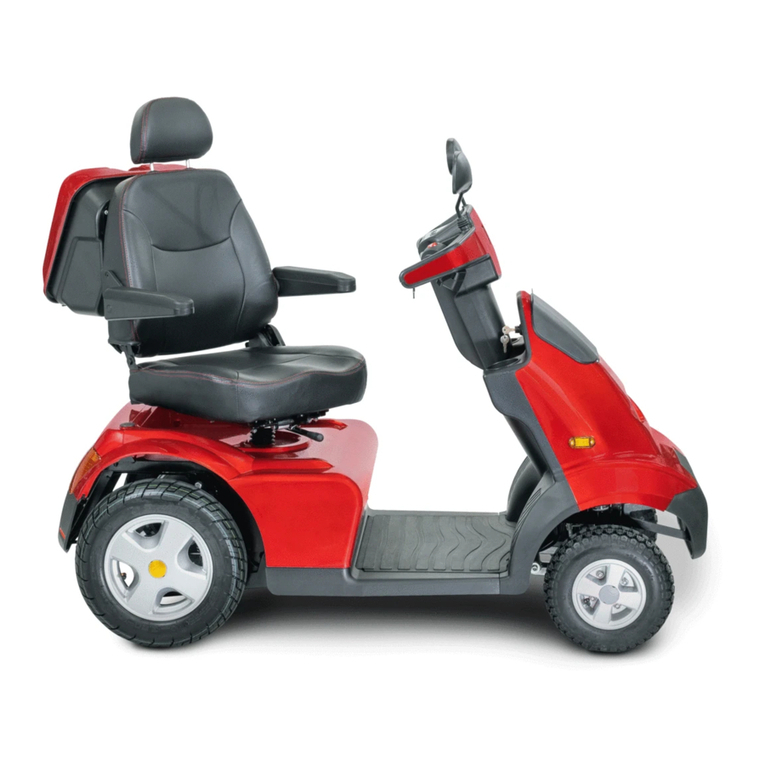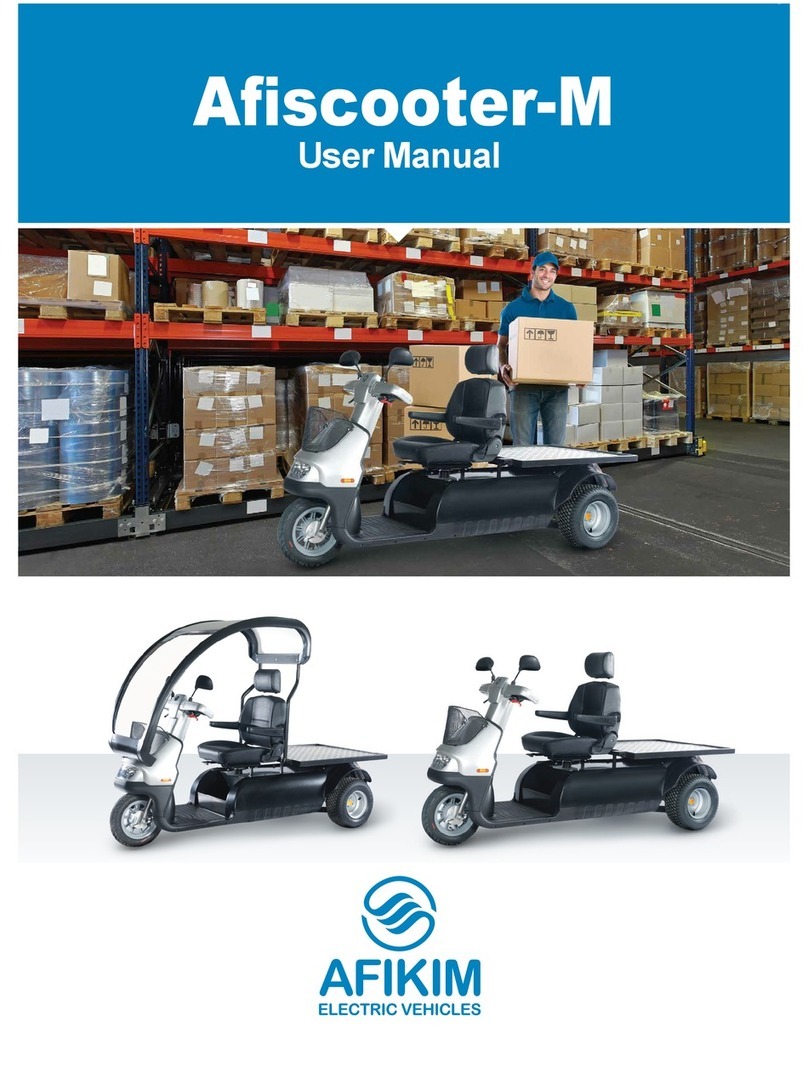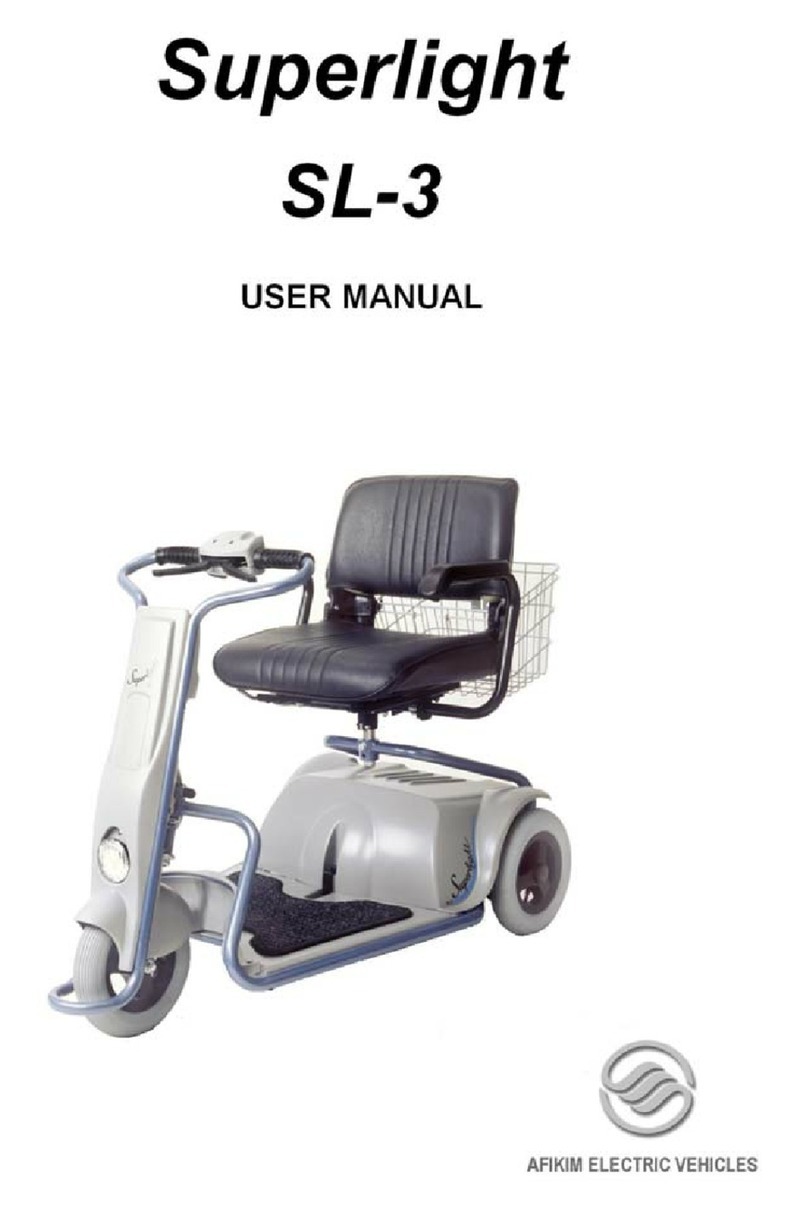CHAPTER 3 –SAFETY INSTRUCTIONS for Breeze S
GENERAL MANDATORY! Do not operate your new Breeze S scooter for the first time
without reading and understanding this user manual completely.
Your Breeze S is a state-of-the-art life-enhancement device designed to
increase mobility. We provide an extensive range of products to best fit the
individual needs of the user. Please be aware that the final selection and
purchasing decision regarding the type of Breeze S scooter to be used is the responsibility
of a user who is capable of making such a decision and of his or her healthcare
professional (i.e., medical doctor, physical therapist, etc.).
The contents of this manual are based on the expectation that a mobility device expert has
properly fitted the Breeze S scooter to the user and has assisted the prescribing
healthcare professional and/or the authorized dealer to give instructions for the use of the
product.
There are certain situations, including some medical conditions, where the user will need
to practice operating the Breeze S in the presence of a trained attendant. A trained
attendant can be defined as a family member or care professional specially trained in
assisting a user in various daily living activities.
As you begin using your Breeze S during daily activities, you will probably encounter
situations in which you will need some practice. Simply take your time and you will soon be
in full and confident control as you manoeuvre through doorways, on and off elevators, up
and down ramps, and over moderately rough terrain.
Below are some precautions, tips, and other safety considerations that will help you
operate the Breeze Ssafely.
MODIFICATIONS
We have designed and engineered your Breeze S to provide maximum
mobility and utility. Under no circumstances should you modify, add, remove,
or disable any feature, part, or function of your Breeze S.
WARNING! Do not modify your Breeze S in any way not authorized by the
manufacturer. Do not use accessories if they have not been tested or
approved by the manufacturer.
REMOVABLE PARTS
WARNING! Do not attempt to lift or move your Breeze S by any of its
removable parts, including the armrests, seat, or shroud.
PRE-RIDE SAFETY CHECK
Get to know the feel of your Breeze S and its capabilities. We recommend
that you perform a safety check before each use to make sure your Breeze S
operates smoothly and safely.
Perform the following inspections prior to using your scooter:
Check for proper tyre inflation. Maintain but do not exceed the psi/bar/kPa air
pressure rating indicated on each tyre.
Check all electrical connections. Make sure they are secure and not corroded.
Check all harness connections. Make sure they are secured properly.
Check the brakes.
Check the battery charge.
If you discover a problem, contact your authorized Breeze S dealer for assistance.
